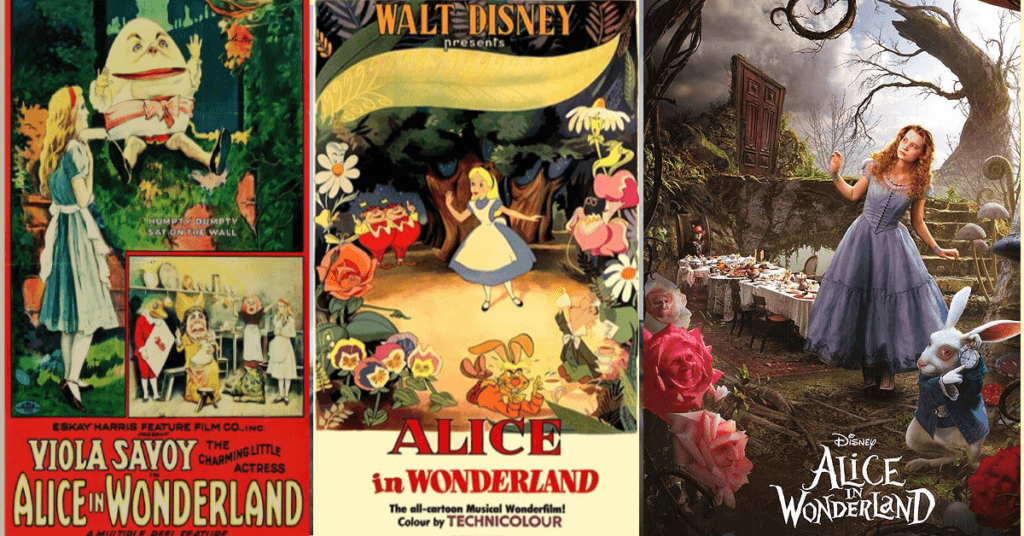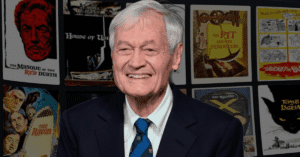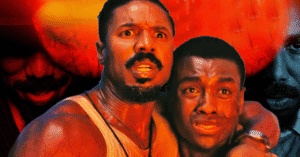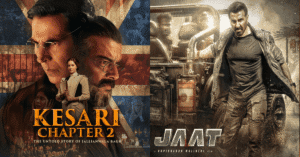There’s something timeless about a curious little girl who falls down a rabbit hole and lands in a world where logic flips, rules melt, and everyone speaks in riddles. Since its publication in 1865, Lewis Carroll’s Alice’s Adventures in Wonderland has become one of the most adapted stories in the world, especially on screen. With over 50 cinematic and televised adaptations across different languages and styles, Alice has journeyed far beyond the pages of a Victorian-era book and transformed into a global pop culture phenomenon.
But what’s truly magical is how this one tale has evolved with time, reflecting the world around it in every decade. From silent films to surreal stop-motion, from Disney classics to CGI blockbusters—Alice has worn many cinematic hats, and the journey is far from over.
Alice Without Words
The very first adaptation of Alice in Wonderland arrived in 1903, a silent British short film directed by Cecil Hepworth and Percy Stow. At just 12 minutes long, it may seem quaint today, but it was revolutionary for its time. Special effects like Alice shrinking and growing were achieved through simple camera tricks, yet they captured the imagination of early audiences. In an era without dialogue, the whimsy of Wonderland had to be expressed purely through visual magic—and surprisingly, it worked.
Another silent version in 1915 from the U.S. expanded on the idea, making it a full-length feature. Without spoken words, these early films relied on exaggerated expressions, theatrical sets, and visual charm. Even in black-and-white, Wonderland glowed with dreamlike unpredictability.
Hollywood Joins the Party
The 1933 Alice in Wonderland, made by Paramount Pictures, brought a new flair to the story. With actors like Cary Grant (as the Mock Turtle) and W.C. Fields (as Humpty Dumpty), it became a fantasy spectacle filled with Hollywood star power. But the film also reflected a post-Depression world—its darker tones and elaborate makeup were far from light-hearted. This version played with the surreal, bordering on eerie, showing that Wonderland wasn’t just a fun place—it could be unsettling too.
Disney’s Defining Version (1951)
When you say “Alice in Wonderland,” chances are the first image that pops up is from Disney’s 1951 animated classic. With its bright colors, catchy songs, and eccentric characters, Disney’s version wasn’t just a hit—it became the definitive Alice for generations. But interestingly, it wasn’t a commercial success right away. Critics at the time thought it strayed too far from Carroll’s original tone. It was only in later decades, especially during the 1960s counterculture era, that it gained cult status. College students saw it as a psychedelic masterpiece, and suddenly Disney’s trippy Wonderland felt very in tune with the times.
What Disney did best, though, was make Wonderland accessible to children worldwide. The Queen of Hearts’ tantrums, the Mad Hatter’s tea party, and the Cheshire Cat’s grin—all became iconic moments etched into pop culture. It simplified the story, yes, but also gave it a wide reach.
Wonderland Gets Weird
The 1960s and 70s were decades of change, rebellion, and questioning reality—perfect themes for Alice. So naturally, filmmakers began exploring Wonderland in stranger, deeper ways.
One standout is the 1966 BBC adaptation directed by Jonathan Miller. Shot in black and white, with no animal costumes or flashy effects, it felt more like a psychological dream than a fantasy adventure. The Wonderland characters were played by serious British actors like Peter Sellers and John Gielgud, dressed in formal Victorian attire. Suddenly, Alice wasn’t a children’s tale—it was a philosophical journey through adult absurdity.
Then came Jan Švankmajer’s 1988 stop-motion film from Czechoslovakia. Titled simply Alice, this version was unlike anything before it. Dark, gritty, and nightmarish, it presented a decaying Wonderland filled with bones, broken toys, and eerie puppets. It wasn’t made for kids—it was a deep dive into the subconscious, and it showed just how versatile Carroll’s story could be.
CGI Meets Coming-of-Age
Fast forward to 2010, and Tim Burton gave us a new kind of Wonderland. With Johnny Depp as the Mad Hatter and Mia Wasikowska as a grown-up Alice, Burton’s version wasn’t just a retelling—it was a sequel and a reimagination. Wonderland became Underland, Alice came back as a warrior, and themes of self-discovery and empowerment took center stage.
While this version used high-end CGI to create a stunning fantasy world, it also took liberties with the original text. Critics were divided—some loved the visual spectacle and deeper themes, others missed the simple charm of Carroll’s world. But commercially, it was a huge success, showing that Alice still had massive appeal in the modern world.
The 2016 sequel, Alice Through the Looking Glass, continued the narrative but leaned even more into fantasy and action, further distancing itself from Carroll’s source. Yet both films proved one thing: Wonderland could be reinterpreted endlessly and still find an audience.
Disney’s Defining Version (1951)
When you say “Alice in Wonderland,” chances are the first image that pops up is from Disney’s 1951 animated classic. With its bright colors, catchy songs, and eccentric characters, Disney’s version wasn’t just a hit—it became the definitive Alice for generations. But interestingly, it wasn’t a commercial success right away. Critics at the time thought it strayed too far from Carroll’s original tone. It was only in later decades, especially during the 1960s counterculture era, that it gained cult status. College students saw it as a psychedelic masterpiece, and suddenly Disney’s trippy Wonderland felt very in tune with the times.
What Disney did best, though, was make Wonderland accessible to children worldwide. The Queen of Hearts’ tantrums, the Mad Hatter’s tea party, and the Cheshire Cat’s grin—all became iconic moments etched into pop culture. It simplified the story, yes, but also gave it a wide reach.
Wonderland Gets Weird
The 1960s and 70s were decades of change, rebellion, and questioning reality—perfect themes for Alice. So naturally, filmmakers began exploring Wonderland in stranger, deeper ways.
One standout is the 1966 BBC adaptation directed by Jonathan Miller. Shot in black and white, with no animal costumes or flashy effects, it felt more like a psychological dream than a fantasy adventure. The Wonderland characters were played by serious British actors like Peter Sellers and John Gielgud, dressed in formal Victorian attire. Suddenly, Alice wasn’t a children’s tale—it was a philosophical journey through adult absurdity.
Then came Jan Švankmajer’s 1988 stop-motion film from Czechoslovakia. Titled simply Alice, this version was unlike anything before it. Dark, gritty, and nightmarish, it presented a decaying Wonderland filled with bones, broken toys, and eerie puppets. It wasn’t made for kids—it was a deep dive into the subconscious, and it showed just how versatile Carroll’s story could be.
CGI Meets Coming-of-Age
Fast forward to 2010, and Tim Burton gave us a new kind of Wonderland. With Johnny Depp as the Mad Hatter and Mia Wasikowska as a grown-up Alice, Burton’s version wasn’t just a retelling—it was a sequel and a reimagination. Wonderland became Underland, Alice came back as a warrior, and themes of self-discovery and empowerment took center stage.
While this version used high-end CGI to create a stunning fantasy world, it also took liberties with the original text. Critics were divided—some loved the visual spectacle and deeper themes, others missed the simple charm of Carroll’s world. But commercially, it was a huge success, showing that Alice still had massive appeal in the modern world.
The 2016 sequel, Alice Through the Looking Glass, continued the narrative but leaned even more into fantasy and action, further distancing itself from Carroll’s source. Yet both films proved one thing: Wonderland could be reinterpreted endlessly and still find an audience.
Read More:



